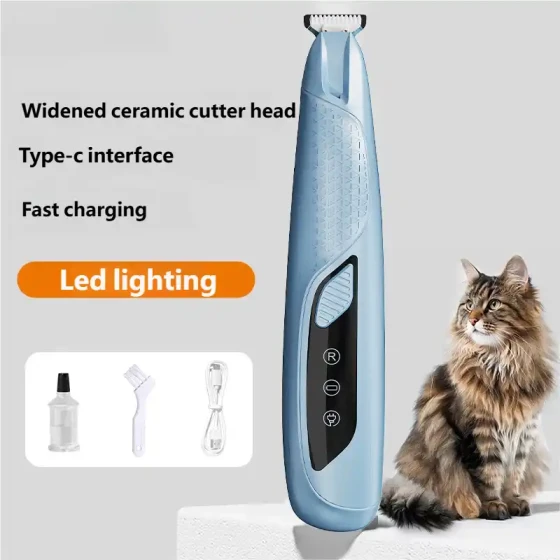Pet Cat 'Recycling Store'? Don't Be Foolish! When Love Cannot Continue, How to Find a Reliable 'Next Home' for the Cat
Article Summary:
- Core Issue: When you can no longer care for a pet cat, how to responsibly find it a new home?
- "Recycling Store" Misconception: There are no legitimate or ethical "pet cat recycling stores," beware of potential risks behind this term.
- Responsible Choices: Main paths include adoption by relatives or friends, contacting reputable animal rescue stations or shelters, and cautiously finding adopters yourself.
- Key Principle: Regardless of the method chosen, the focus is to ensure the cat's welfare and safety, absolutely no abandonment.
- Important Tips: Fully assess before rehoming, strictly screen adopters during the process, and complete necessary procedures.

We understand that life always brings unexpected changes. It could be a job transfer, family members’ allergies, or changes in financial circumstances that prevent your beloved cat from staying by your side. When facing the dilemma of "how to give away a pet you no longer want," some people might search for terms like "pet cat recycling store," hoping to find a quick and easy solution.
However, please allow us to state bluntly: legitimate and ethical "pet cat recycling stores" basically do not exist. This term itself carries a coldness that objectifies a life as if disposing of old appliances. Any person or organization claiming to "recycle" cats must be treated with high caution. They may be involved in inhumane handling, reselling cats for improper purposes (such as experiments or breeding tools), or even outright abandonment. This not only puts cats in danger but may also violate legal and moral boundaries.
Giving up a partner you once promised to care for a lifetime is an extremely difficult and heartbreaking decision. But if you have truly come to this step, our top and only ethical task is to responsibly find it a safe, loving new home. This is not only respect for the cat’s life but the last responsibility the former owner must fulfill.
Saying Goodbye to the "Recycling" Mindset: Why "Recycling" Pets is a Wrong Concept
Imagine describing a living, emotional little life with the word "recycle" — doesn't that feel uncomfortable? Cats are not waste; they are companion animals dependent on humans and capable of feeling joy, anger, sadness, and happiness.
- Emotional Neglect: Viewing cats as recyclable items ignores their emotional needs and attachment to their original owners. A drastic change in environment and feelings of abandonment can cause huge psychological trauma.
- Safety Risks: "Recycling" channels are often opaque, making it hard to track the cat’s whereabouts. They might fall into the hands of abusers or struggle to survive in harsh environments. It’s like handing your child to strangers, with unimaginable consequences.
- Moral Responsibility: Owning a pet is a long-term commitment. Even if you cannot continue, you should strive to arrange a good future for the pet rather than choosing the easiest but possibly cruelest way.
Responsible Rehoming Paths: Giving Cats a Better Future
So, when you can no longer care for a cat, what reliable ways are there?
1. Passing Love within the Circle of Relatives and Friends ("Internal Resolution")
This is one of the most ideal situations. Ask trusted relatives, friends, colleagues, or neighbors if anyone is willing and able to take your cat.
- Advantages:
- Familiarity: You understand the potential adopter’s character, living environment, and pet experience, making it more reassuring.
- Smooth Transition: The cat may have some familiarity with the new environment and owner, reducing stress reactions. You might even have the opportunity to visit occasionally.
- Disadvantages:
- Limited Scope: Suitable candidates might be few.
- Social Considerations: Sometimes it’s hard to impose too many adoption conditions for the sake of maintaining relationships, but necessary communication and screening for the cat's benefit are indispensable.
Key Points: Honestly communicate the cat’s personality, health status, living habits (such as picky eating, clinginess, litter box usage), and ensure the other party truly loves and has the conditions (time, energy, finances) to take good care of it.
2. Contacting Reputable Animal Rescue Stations or Shelters ("Professional Institution Custody")
Professional animal rescue organizations provide temporary shelter, medical aid, and home-finding services for displaced or abandoned animals.
- Advantages:
- Professional Care: Usually have experienced staff and volunteers providing basic medical checks, spaying/neutering (if not done), vaccinations, etc.
- Strict Screening: They review adoption applicants to ensure cats go to responsible homes.
- Relatively Safe: Compared to unknown "recycling points," this is a more regulated and humane choice.
- Disadvantages:
- Limited Resources: Many local rescue stations often have more animals than they can care for, leading to waiting lists or temporary inability to accept new pets.
- Possible Fees: Some organizations charge a "surrender fee" or "donation fee" to cover operation and cat expenses. This is a practical necessity, not for profit.
- Environmental Stress: Shelters are still stressful environments for cats and less comfortable than home settings.
How to Find: You can search online (careful to verify authenticity), consult local pet hospitals, or ask pet communities to find nearby rescue stations. Before contacting, clarify their intake procedures, requirements, and possible fees. Always choose transparent and reputable organizations.
Analogy: It’s like finding a reliable boarding school or daycare for a child — not a final home, but a place offering professional care and a chance to find a suitable family.
3. Cautiously Finding Adopters Yourself ("Responsible Matchmaking")
If the first two options don’t work, you may try finding a new owner yourself. This requires a lot of time and effort and involves taking on the responsibility of screening.
- Paths:
- Reliable Online Platforms: Some pet forums with review systems, local classified sections focused on pets, or dedicated adoption platforms (e.g., well-known pet apps or public accounts).
- Social Media: Post adoption information on WeChat moments, Weibo, and ask friends to share.
- Pet Hospitals/Pet Shops: Some vets or shops might be willing to post adoption notices.
- Key Steps (Extremely Important!):
- Detailed Adoption Information: Publish photos of the cat, age, gender, personality, health status (spaying/neutering, vaccination), living habits, and requirements for adopters. Must be truthful and detailed.
- Strict Screening Process:
- Communication: Deeply communicate with interested parties to understand their pet experience, home environment (housing, family consent), financial capacity, and understanding of cats. Ask open questions like "What would you do if the cat got sick?" or "How do you plan to care for the cat in its senior years?"
- Meeting and Interaction: Arrange for the potential adopter and the cat to meet and observe interactions.
- Home Visit (If Possible): Check if the living environment is safe (e.g., secured windows), suitable for cats.
- Identity Verification: Keep a copy of the adopter’s identity documents.
- Sign an Adoption Agreement: Draft a detailed agreement clarifying rights and obligations, such as requiring scientific feeding, spaying/neutering at proper age, seeking medical attention when ill, no abandonment, and accepting follow-ups. This protects the cat and binds both parties.
- Charge Symbolic Deposit or Adoption Fee: This is not for profit but to filter out impulsive or ill-intended people (e.g., cat traders) and increase adoption seriousness. The deposit can be partially or fully refunded after meeting certain conditions like spaying/neutering and satisfactory visits. Fees may range from tens to a few hundred RMB, used for transferring supplies or as a small donation. Remember, "There is no free lunch," free adoptions often carry higher risks.
Analogy: This is like arranging a serious "matchmaking" for the cat, where you play the role of the "biological family," carefully screening to ensure the adopter is genuine, qualified, and can commit for life — no rushed or bare-bones "marriages."
Absolutely Forbidden: Abandonment and Release
1. Abandonment (The Irresponsible "Wholesale Drop-off")
Randomly abandoning cats in communities, parks, or wild areas is the most irresponsible and cruel behavior. Abandoned house cats often lack survival skills in the wild, facing hunger, disease, car accidents, attacks from other animals, and even abuse. Their average lifespan shortens dramatically. Abandonment also negatively impacts community sanitation and ecology. In some places, abandonment can lead to fines and legal consequences.
2. Release (Seemingly Compassionate but Actually Cruel)
Thinking that "releasing" a house cat back into nature is good for it is a serious misunderstanding. Domestic cats have long been domesticated and cannot adapt to wild survival challenges. They may fail to catch enough food, cannot avoid predators and dangers, and are prone to parasites and diseases. Moreover, domestic cats in natural environments may threaten native small wildlife and disrupt ecological balance.
Before Making a Decision: Can You Try Harder?
Sometimes, the problems making you want to give up your cat are not completely unsolvable. Before deciding, ask yourself:
- Behavioral Issues? Does the cat scratch furniture or urinate and defecate outside the litter box? Try seeking help from professional cat behavior consultants or learn training techniques. Many behavioral problems can be corrected with patience and proper methods.
- Allergy Issues? Does a family member have cat hair allergies? Try using air purifiers, frequent cleaning, limiting cat activity areas, and consult doctors for anti-allergy medication. Sometimes symptoms lessen or people adapt over time.
- Financial Issues? Is cat care expensive? Consider switching to cost-effective cat food and supplies, learn basic care to reduce vet visits (without delaying treatment), or seek short-term help from family and friends.
- Moving/Job Change? Does the new place not allow cats? Try to find pet-friendly housing or see if trusted relatives or friends can temporarily foster the cat until you stabilize and bring it back.
Reassessing might reveal that the difficulties are not insurmountable.
Simple Q&A
Q1: Do "pet cat recycling stores" really exist?
A1: There are basically no legitimate and ethical so-called "pet cat recycling stores." The term itself is problematic, implying pets are objects. Beware of any such institutions or individuals claiming this name. Prioritize animal rescue stations, shelters, or responsible private adoption routes.
Q2: Is there a fee to send cats to rescue stations/shelters?
A2: Many rescue stations/shelters charge a "surrender fee" or "donation fee," typically a few hundred RMB, to cover food, medical care, and daily expenses for cats. Please consult the specific institutions for details. This is necessary for operational sustainability, not profit.
Q3: What key points should I pay attention to when finding an adopter myself?
A3: The most critical part is strict screening of adopters! Conduct in-depth communication, examine adopter conditions, ideally do home visits, sign a binding adoption agreement, and collect a symbolic adoption fee or deposit to raise the threshold. Avoid rushing just to get the cat rehomed.
Q4: What are the consequences of abandoning cats?
A4: For cats, it can mean hunger, disease, injury, or death. For owners, it is a severe moral failure and may lead to fines or legal punishments in some regions. For the community, it may cause sanitation and management issues.
Conclusion: Love It, Be Responsible to the End
Letting go of a cat that once accompanied you, for whatever reason, is a heavy decision. We hope this article helps you understand that the so-called "pet cat recycling store" is not the right way. True responsibility means, even if you cannot continue companionship, doing your utmost to find a permanent home through proper and safe channels, where your cat can receive warmth and care.
Please remember, every little life deserves gentle treatment. Think carefully before choosing and act cautiously to ensure that the little buddy who once brought you joy can live safely, healthily, and happily in the days ahead.





